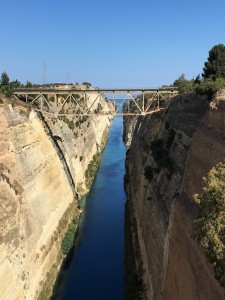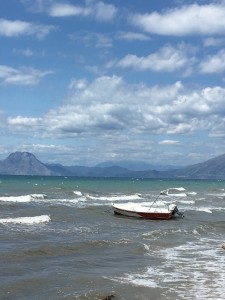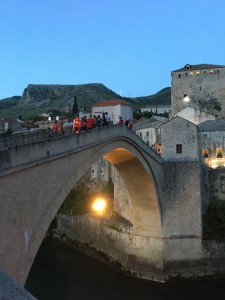I did not know what to expect from the cultural journey we were about to take when we landed at Athens International Airport, Eleftherios Venizelos. Unlike others in the group, I grew up in the region. Hence, it felt like I was coming home to a home that was not my home. My story is a direct outcome of globalization—the economic, cultural, political, and technological webbing of the world and the people who move freely within and outside of national and regional borders. This new group of people are often referred to as cosmopolitans; in the Greek, they are κοσμοπολίτης (kosmopolitês), formed from κόσμος (kosmos), which is “world”, and πολίτης (politês), which is “citizen” or “[one] of a city.” A diasporic cosmopolitan, my journey of exploring Greece and the Balkans began with mixed feelings about identity, belonging, nationality, memory, and border crossing. As I passed the security at the airport, I arrived at a place whose history, culture, food, landscape, smells, and people reminded me of home.
Performing ruins and cultural memory occupied most of our discussion prior to our Hales trip. Even though my research heavily deals with cultural memory and the topic is at the core of the Intercultural Communication course I teach every other year, I rarely use my ethnography and performance studies lenses to understand how cultural memory is performed in locations that are clearly connected to my cultural background.
As the familiar aromas of jasmine and oranges took me to a journey of remembrance, the streets of Athens, Dubrovnik, Sarajevo, and Mostar guided me in a cultural journey to the past and the complicated presents of these cultures, where civilizations, religions, empires, nation-states, regional groupings, European Union (EU), and globalization processes left their marks. As the streets, monuments, landmarks, and ancient sites of these locations revealed pieces of history and narrated aspects of complicated national and regional stories, the information presented in tourist spots framed these stories in a particular way. Hence, ruins and cultural memory are framed to fit into the national story the way a particular group prefers its story to be told. For example, the Ottoman Empire, despite more than 400 years of historical connection, was absent in Greece, while the presence of the Ottomans in Bosnia and Herzegovina was visible and was part of the contemporary cultural fabric.
As I maneuvered among these cultural locations, ancient and contemporary sites, and ruins (particularly in Sarajevo), I focused on how stories (local and national) are told, how the past is framed, how ruins are re-appropriated, and how their cultural memories are overlapped, intersected, clashed, and recreated with my own. It is not accidental that I felt at home, even though I was far away.
Ahmet Atay



